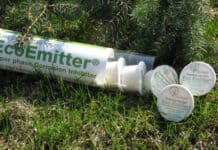By Peter Huss
As the manager of a commercial building, clinical laboratory, medical center, or any other mission-critical facility making use of sophisticated and sensitive electrical equipment, the accurate and sustained performance of this on-site equipment has a huge impact on your success. Given that this equipment is likely quite expensive and its results are vital to customers, clients, tenants, or other stakeholders, facilities managers and executives should constantly be looking for ways to optimize equipment performance, extend equipment life cycles, reduce operating and maintenance costs, and manage risk. One way to accomplish each of the above objectives is to consider more closely one of the most overlooked and underappreciated elements of facilities operations—the power environment.
Dirty Power Leads to Poor Performance
Electrical equipment of all kinds relies on a power supply to operate just as a car relies on fuel. Much like fuel, the quality of electrical power varies widely and often in unforeseen ways. Inconsistent power into a machine leads to inconsistent performance out of that machine, and though homeowners and facilities executives alike often believe that power availability equates to power quality, they are mistaken. While the lights being off certainly indicates a power environment has been compromised, the lights being on is no evidence that the power environment (and thus the power in it) is clean.
In fact, it is when the power is on that your systems might be at their most vulnerable, as 90% of the electrical disturbances impacting the integrity of the power flowing to your equipment is invisible and comes from within the environment. While power disturbances are most visible during an electrical outage, spikes, normal-mode noise, and common-mode noise are present to some degree all the time. Left unchecked, these disturbances can lead to downtime, data errors, inaccurate measurements, shortened equipment life, and increased service calls, which translates to lost time, productivity, money, and credibility for the equipment owner, the OEM, and the facility manager.
Seemingly anomalous errors that lead to “no trouble found” service calls are frequently the result of such dirty power disturbances. These mysterious performance issues often result from what is called “disruption,” whereby power disturbances corrupt logic signals, which can alter digital output and lead to software bugs. Other issues include destruction, which is caused by power surges, and degradation, which is caused by low-amplitude power disturbances that erode semi-conductors and lead to thermal runaway. These issues can cost your company money in the form of replacement components and additional equipment servicing. Facilities managers would be wise to recognize the risk of these disturbances, even if they cannot always see the causes.
Causes & Solutions for Poor Quality Power
But what are the causes for these harmful disturbances in electrical power? While a massive lightning strike might immediately come to mind, experts estimate only 10% of power problems, whether in the form of degradation, destruction, or disruption, occur due to Mother Nature. Electrical storms are the most visible display of power environment problems, and that visibility makes it easier to identify and address issues that arise.
 It is far more likely the power environment is impacted by the very equipment already within your building—centrifuges, heaters, coolers, pumps, motors, or even overhead lights. Even refrigeration units and HVAC systems can cause electrical disturbances. These systems are necessary to keep building operations up and running but they can also produce electrical impulses, high-frequency noise, and high-voltage transients. This presents a problem, as these systems must stay running but they also create disturbances that need to be mitigated.
It is far more likely the power environment is impacted by the very equipment already within your building—centrifuges, heaters, coolers, pumps, motors, or even overhead lights. Even refrigeration units and HVAC systems can cause electrical disturbances. These systems are necessary to keep building operations up and running but they can also produce electrical impulses, high-frequency noise, and high-voltage transients. This presents a problem, as these systems must stay running but they also create disturbances that need to be mitigated.
A solution to maintaining uptime and protecting the equipment within your facility is a power quality management system. Power quality solutions filter electricity flowing from the energy source to each device to ensure smooth performance of connected equipment. Even the most meticulously engineered and carefully calibrated electrical equipment is inevitably impacted by what you put into it, so a power protection solution works similarly to the way a fuel filter protects a car engine from impurities.
To help you visualize how this works in a graphical sense, consider that clean power flows in a sine wave. Power problems appear as sags, swells, or spikes in that wave. The more advanced your electronics equipment is, the more susceptible it is to even the smallest power disturbances, so these blips are a big deal. As established earlier, inconsistency in power means inconsistency in performance, so power quality solutions essentially eliminate those variables to keep the sine wave smooth.
Protecting Your Power the Right Way
 It is worth mentioning however that not all power protection is created equal. The three key components that ensure a solid power quality system are a surge diverter, a noise filter, and a low impedance isolation transformer. While the majority of solutions available deploy a surge diverter, a noise filter, or both, the most important element of power protection is actually the low impedance isolation transformer. This specialized feature acts to isolate the powered instrument from the power source and re-establishes the neutral-ground bond without opposing or disrupting the current path, keeping unwanted noise out without negatively affecting power flow. This ensures only clean, reliable power consistently flows to and through your devices. Solutions without a low impedance isolation transformer may actually cause disturbances—and therefore downtime—rather than reducing them.
It is worth mentioning however that not all power protection is created equal. The three key components that ensure a solid power quality system are a surge diverter, a noise filter, and a low impedance isolation transformer. While the majority of solutions available deploy a surge diverter, a noise filter, or both, the most important element of power protection is actually the low impedance isolation transformer. This specialized feature acts to isolate the powered instrument from the power source and re-establishes the neutral-ground bond without opposing or disrupting the current path, keeping unwanted noise out without negatively affecting power flow. This ensures only clean, reliable power consistently flows to and through your devices. Solutions without a low impedance isolation transformer may actually cause disturbances—and therefore downtime—rather than reducing them.
At the end of the day, power protection is about proactively mitigating and managing the risk to your equipment (and therefore, your building) from power-related failures, including performance degradation, erosion of sensitive conductors, components, and circuits from low-amplitude power disturbances, and surges. Facility executives cannot wait for electrical issues to happen. To provide the best and most profitable experience for those in their building, they must ensure the building itself provides a clean power environment. Power quality solutions are the simplest way to accomplish that.
Huss is a veteran electrical engineer with nearly four decades of experience in the industry, the most recent two of which have been with AMETEK Powervar. Currently serving as an Applications Engineer for AMETEK Powervar, Peter relies on the field experience he gained as an expert foreman prior to joining the company.



















![[VIDEO] Collect Asset Data at the Speed of Walking a Building](https://facilityexecutive.com/wp-content/uploads/2024/02/maxresdefault-324x160.jpg)
I think you also need voltage and frequency regulation to have “Total” power protection.